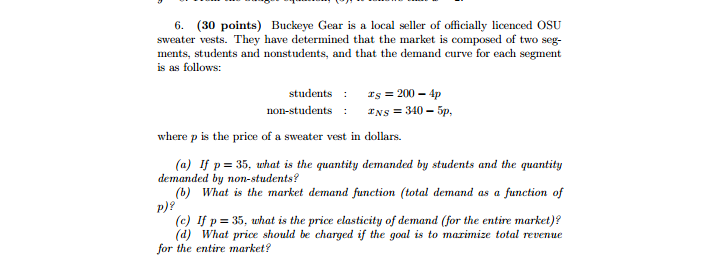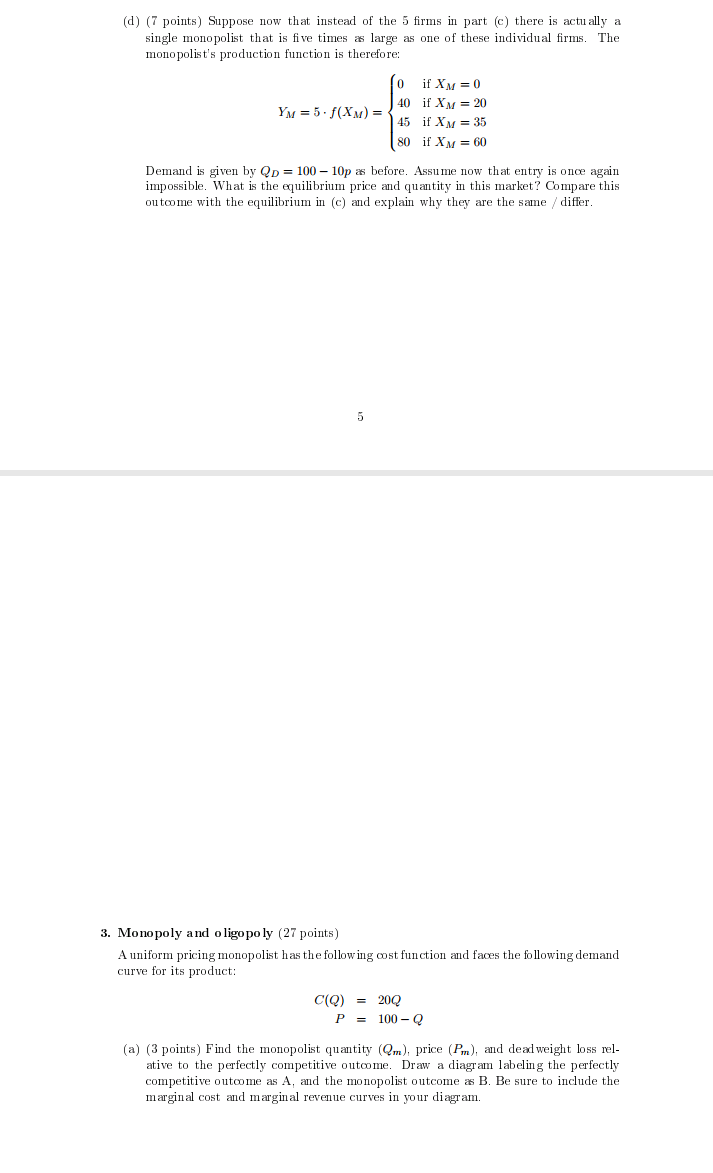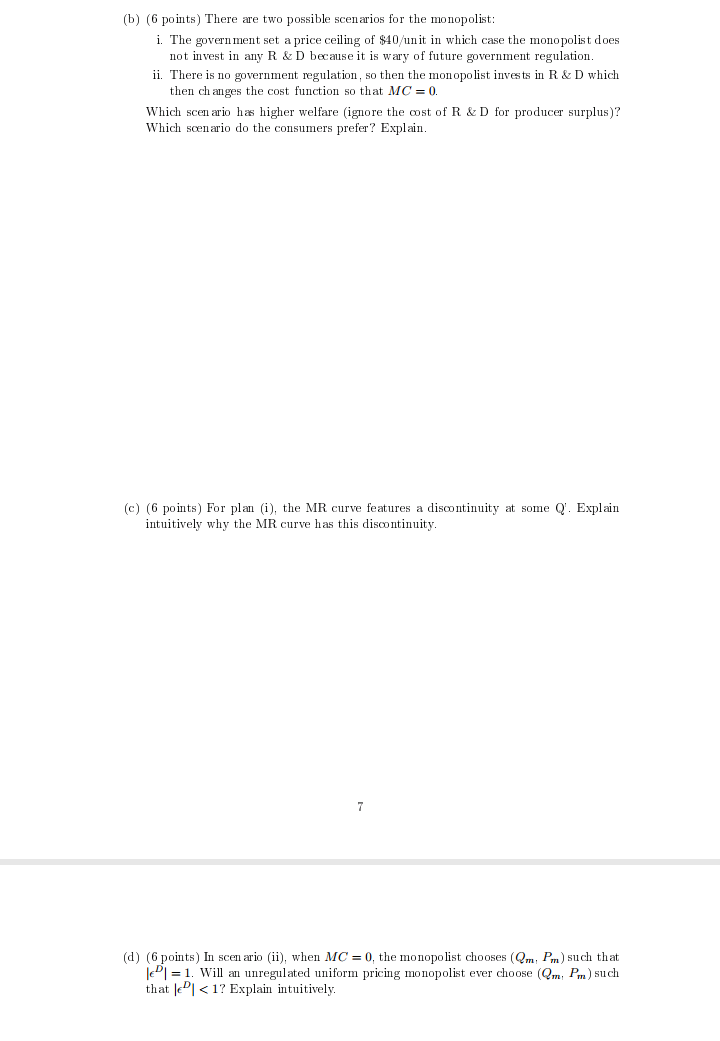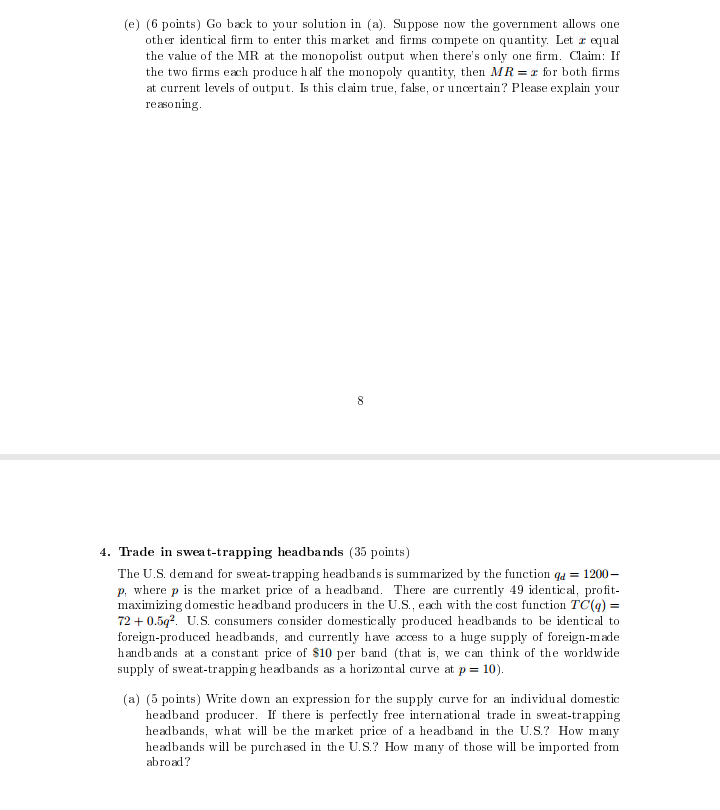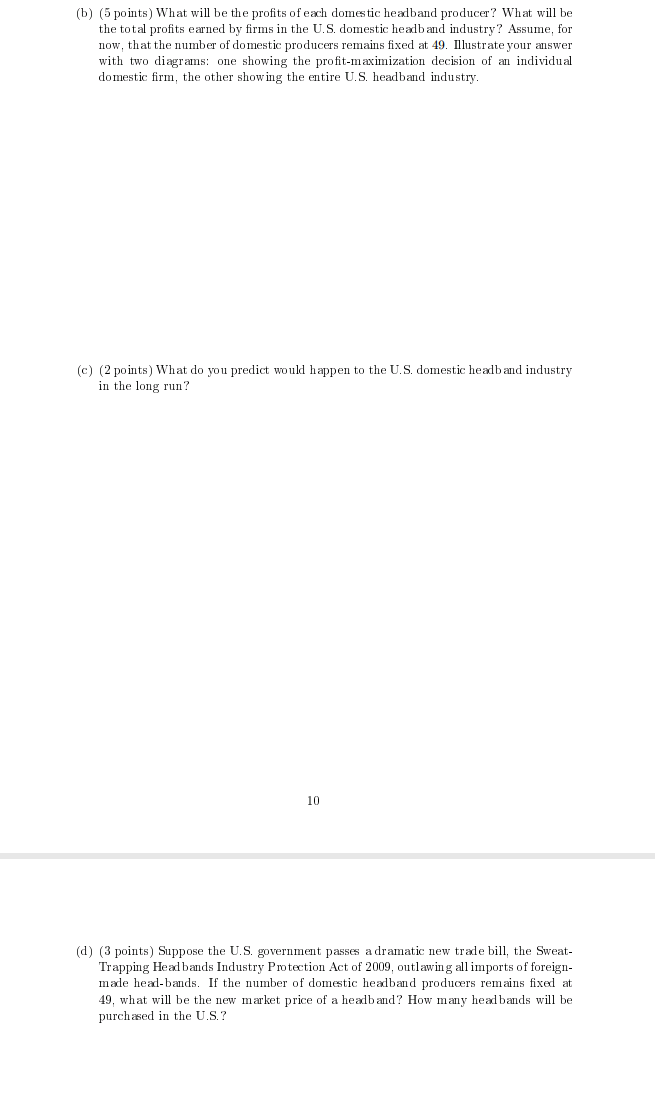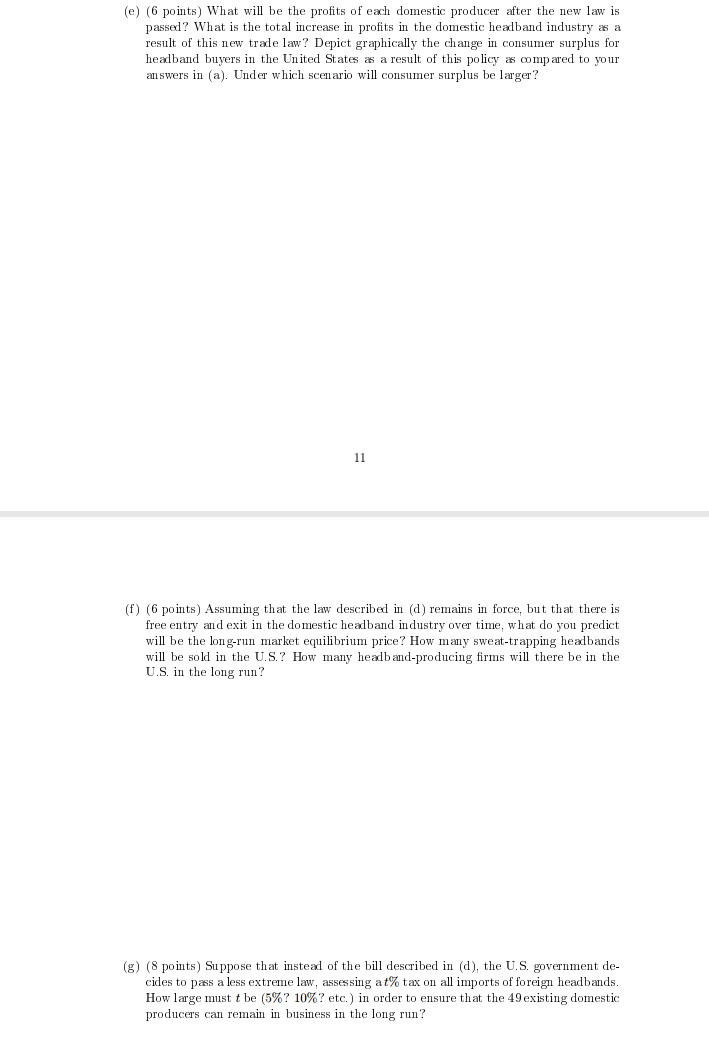
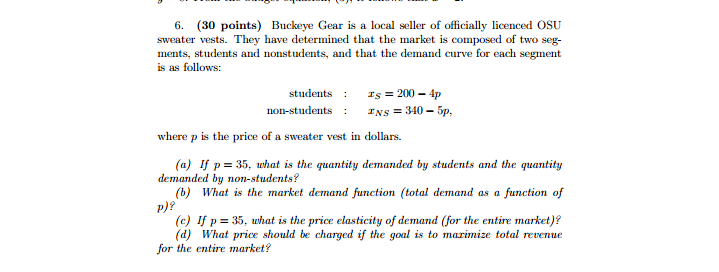
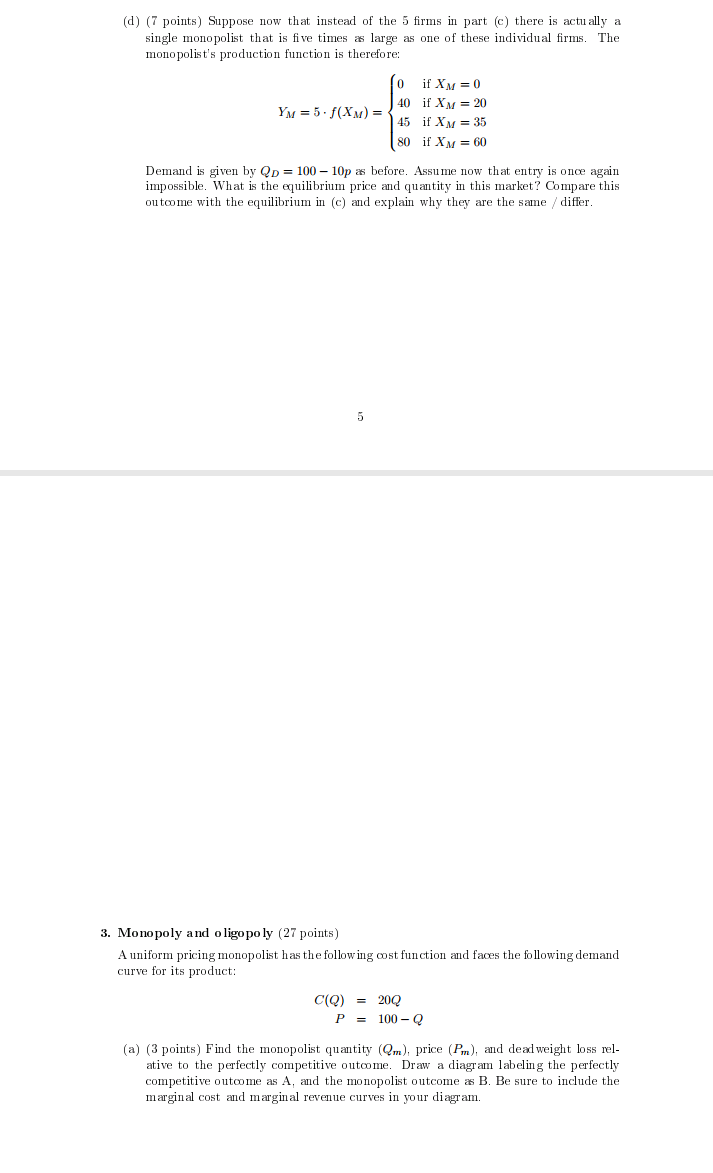
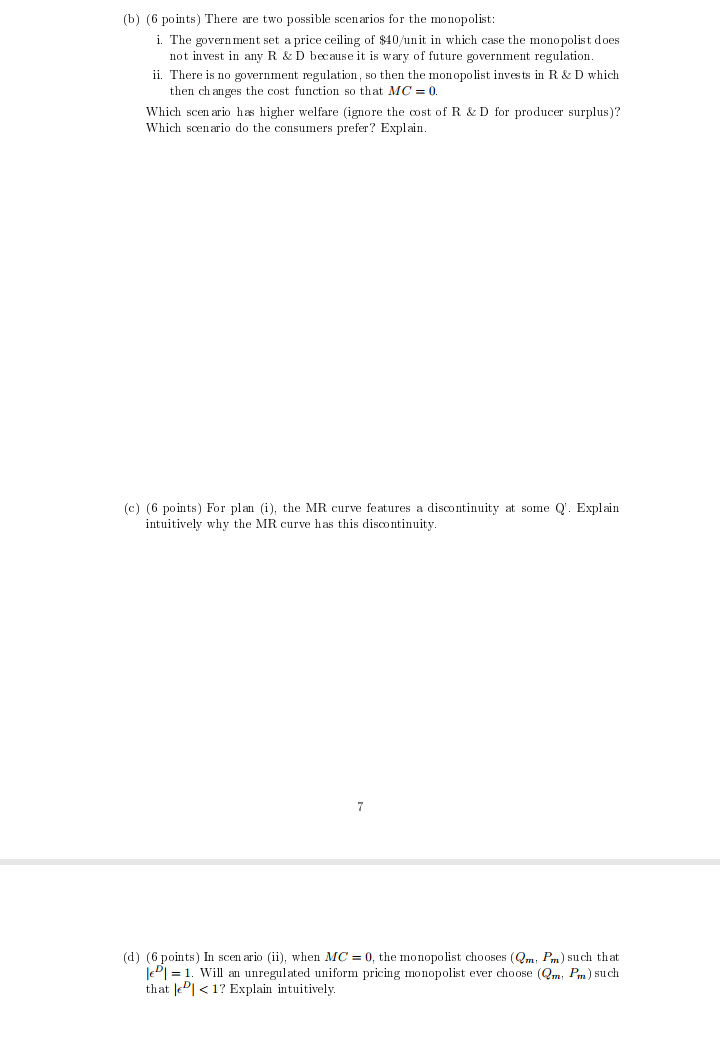
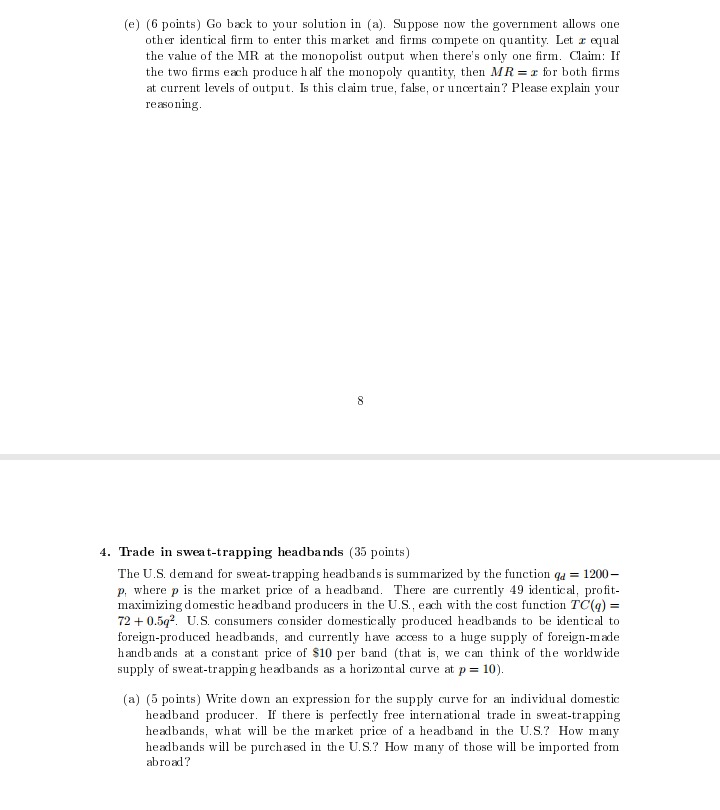
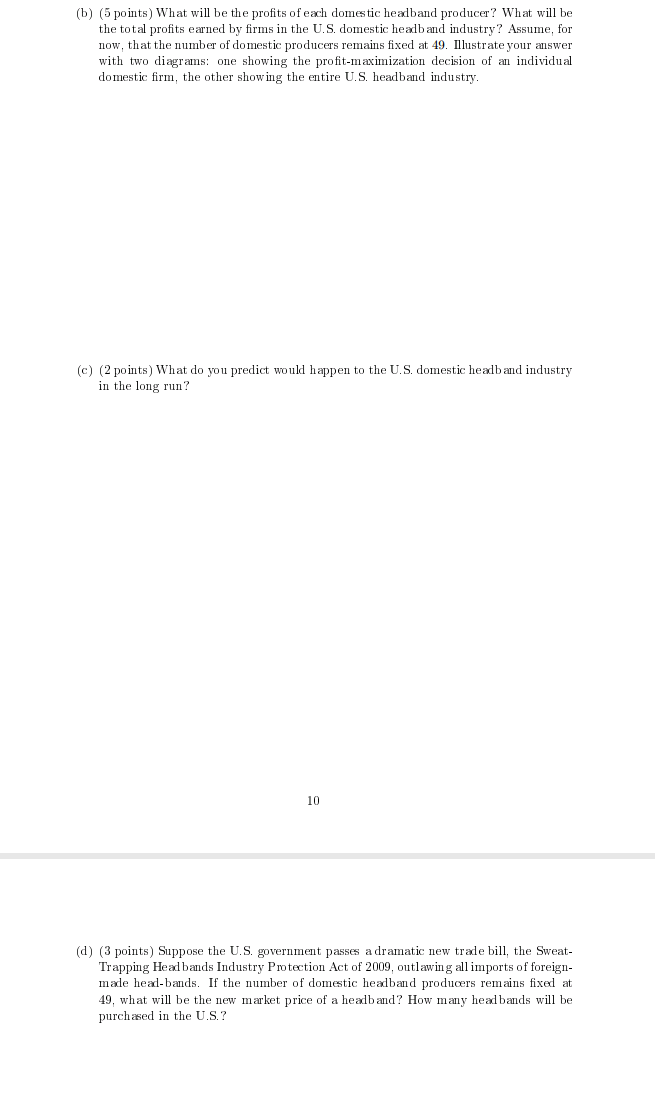
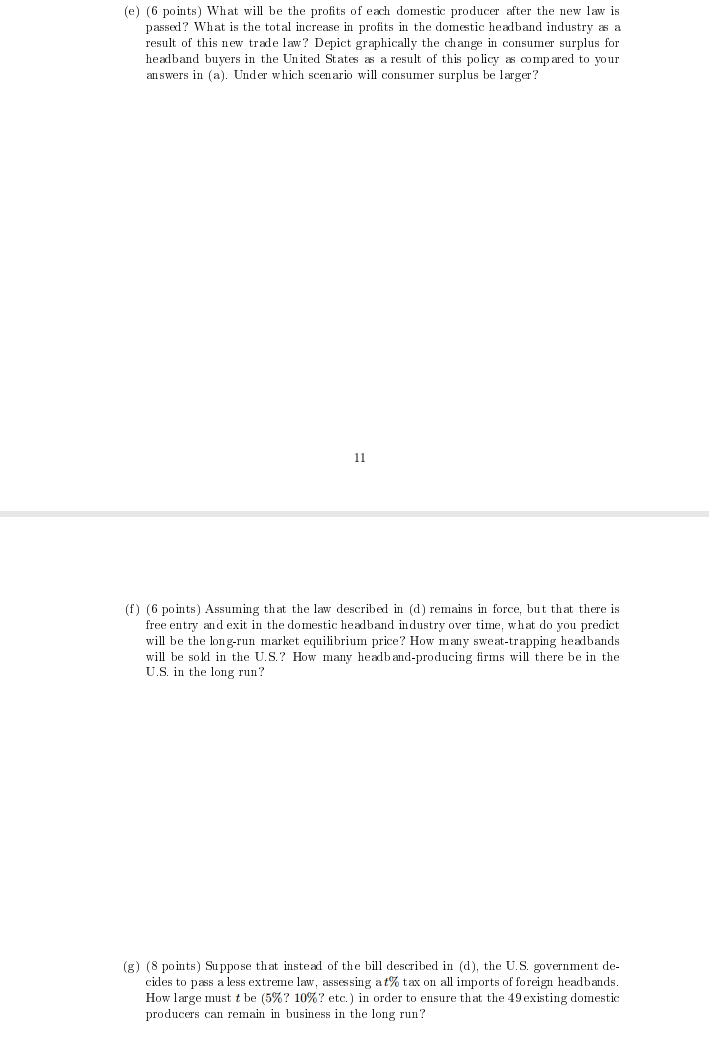
Please help me, its an econ question
1. (10 points) Suppose a consumer derives utility from food (good r) and clothing (good y). The consumer has cash income, M = 200, and faces prices, Px = 2 and py = 10. In addition to her cash income, the consumer receives from the government 100 in food stamps, which can be used to purchase food but not clothing. Using a carefully drawn and labeled graph, indicate the set of consumption bundles that the consumer can afford. (You need to put numbers on the axes so that I can see the amount of each good corresponding to any point in the graph.)6. (30 points) Buckeye Gear is a local seller of officially licenced OSU sweater vests. They have determined that the market is composed of two seg- ments, students and nonstudents, and that the demand curve for each segment is as follows: students : IS = 200 - 4p non-students : INS = 340 - 5p, where p is the price of a sweater vest in dollars. (a) If p=35, what is the quantity demanded by students and the quantity demanded by non-students? (b) What is the market demand function (total demand as a function of p)? (c) If p = 35, what is the price elasticity of demand (for the entire market)? (d) What price should be charged if the goal is to marimize total revenue for the entire market?(d) (7 points) Suppose now that instead of the 5 firms in part (c) there is actually a single monopolist that is five times as large as one of these individual firms. The monopolist's production function is therefore: 0 if XM = 0 YM = 5 . f(XM) = 40 if XM = 20 45 if XM = 35 80 if XM = 60 Demand is given by QD = 100- 10p as before. Assume now that entry is once again impossible. What is the equilibrium price and quantity in this market? Compare this outcome with the equilibrium in (c) and explain why they are the same / differ. 3. Monopoly and oligopoly (27 points) A uniform pricing monopolist has the following cost function and faces the following demand curve for its product: C(Q) = 20Q P = 100 - Q (a) (3 points) Find the monopolist quantity (Qm), price (Pm), and dead weight loss rel- ative to the perfectly competitive outcome. Draw a diagram labeling the perfectly competitive outcome as A, and the monopolist outcome as B. Be sure to include the marginal cost and marginal revenue curves in your diagram.[h] [5 points] There are two possible scenarios for the monopolist: i. The government set aprice ceiling of $4Elf'unit in which case the monopolist does not invest in any R 3.: B because it is wary of future government regulation. ii. There is no government regulationI so then the monopolist invests in R 3: D which then ch anges the cost function so that ME = 1]. Which scenario hm higher welfare [ignore the cost of R 3: D for producer surplus]? Which scenario do the consumers prefer? Explain. [c] [5 points] For plan [i]. the MR curve features a discontinuity at some Q'. Explain intuitively why the MR curve has this discontinuity. [d] [5 points] In scenario [ii]. when ME = D, the monopolist chooses [le Pm) such that |D| = 1. Will an unregulated uniform pricing monopolist ever choose [le Pm] such that IEDI c. 1? Explain intuitively. (e) (6 points) Go back to your solution in (a). Suppose now the government allows one other identical firm to enter this market and firms compete on quantity. Let a equal the value of the MR at the monopolist output when there's only one firm. Claim: If the two firms each produce half the monopoly quantity, then MR = x for both firms at current levels of output. Is this claim true, false, or uncertain? Please explain your reasoning. 8 4. Trade in sweat-trapping headbands (35 points) The U.S. demand for sweat-trapping headbands is summarized by the function 92 = 1200- p, where p is the market price of a headband. There are currently 49 identical, profit- maximizing domestic headband producers in the U.S., each with the cost function TC(q) = 72 +0.5q2. U.S. consumers consider domestically produced headbands to be identical to foreign-produced headbands, and currently have access to a huge supply of foreign-made handbands at a constant price of $10 per band (that is, we can think of the worldwide supply of sweat-trapping headbands as a horizontal curve at p = 10). (a) (5 points) Write down an expression for the supply curve for an individual domestic headband producer. If there is perfectly free international trade in sweat-trapping headbands, what will be the market price of a headband in the U.S.? How many headbands will be purchased in the U.S.? How many of those will be imported from abroad?(b) (5 points) What will be the profits of each domestic headband producer? What will be the total profits earned by firms in the U.S. domestic headband industry? Assume, for now, that the number of domestic producers remains fixed at 49. Illustrate your answer with two diagrams: one showing the profit-maximization decision of an individual domestic firm, the other showing the entire U.S. headband industry. (c) (2 points) What do you predict would happen to the U.S. domestic headband industry in the long run? 10 (d) (3 points) Suppose the U.S. government passes a dramatic new trade bill, the Sweat- Trapping Head bands Industry Protection Act of 2009, outlawing all imports of foreign- made head-bands. If the number of domestic headband producers remains fixed at 19, what will be the new market price of a headband? How many head bands will be purchased in the U.S.?(e) (6 points) What will be the profits of each domestic producer after the new law is passed? What is the total increase in profits in the domestic headband industry as a result of this new trade law? Depict graphically the change in consumer surplus for headband buyers in the United States as a result of this policy as compared to your answers in (a). Under which scenario will consumer surplus be larger? 11 (f) (6 points) Assuming that the law described in (d) remains in force, but that there is free entry and exit in the domestic headband industry over time, what do you predict will be the long-run market equilibrium price? How many sweat-trapping headbands will be sold in the U.S.? How many headband-producing firms will there be in the U.S. in the long run? (g) (8 points) Suppose that instead of the bill described in (d), the U.S. government de- rides to pass a less extreme law, assessing at% tax on all imports of foreign headbands. How large must t be (5%? 10%? etc. ) in order to ensure that the 49 existing domestic producers can remain in business in the long run








